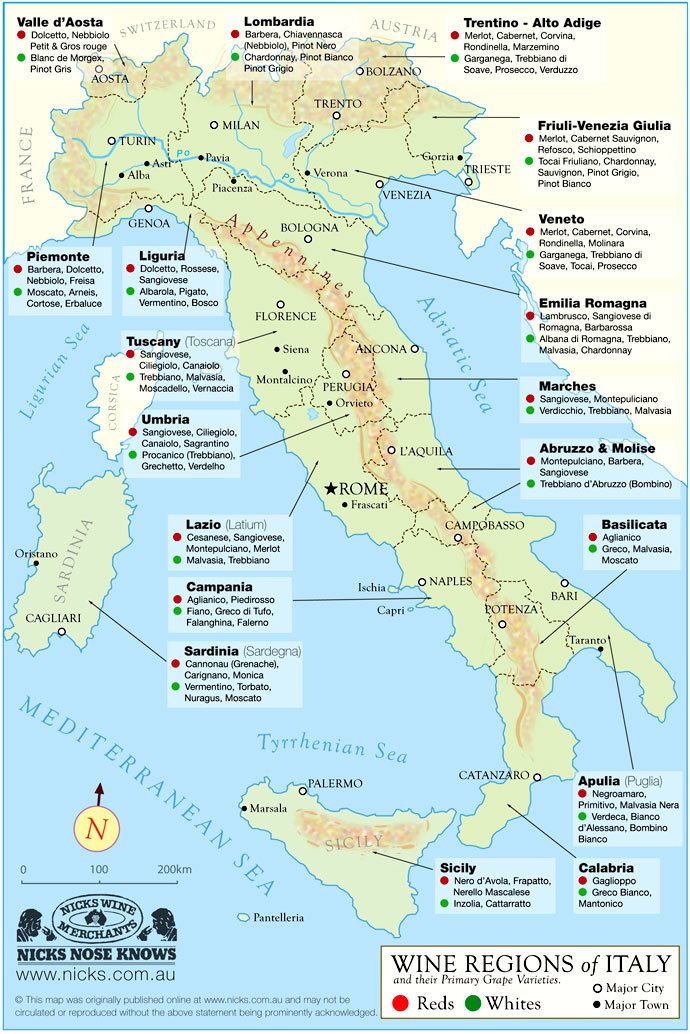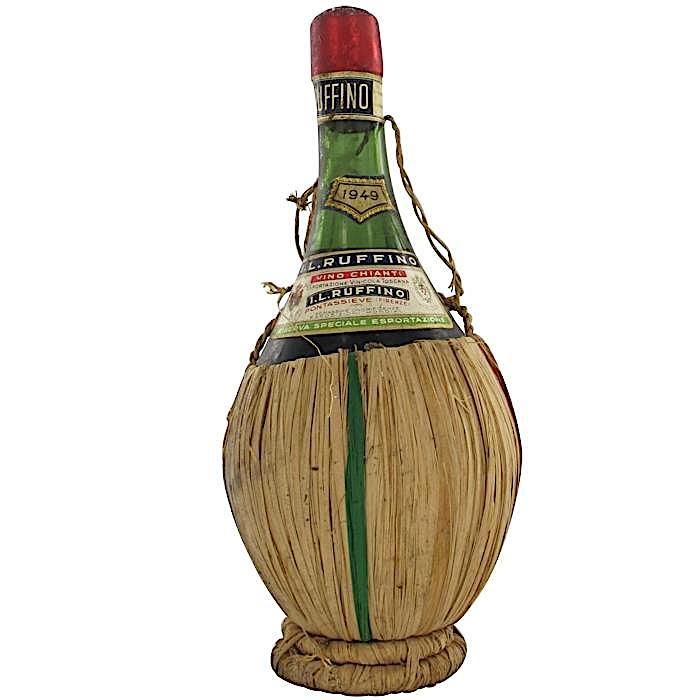
It’s reasonable enough to expect that someone with my last name and background might tend to favor Italian wines, but there are actually many reasons for that, none purely nostalgic. Not that much wine was drunk by my parents while I was growing up, and when they did it was likely to be a straw-covered bottle of Ruffino Chianti. My own first interest in wine ran more to Mateus and Lancers Rosé on a date, graduating to French bottlings, which back in the late Sixties were amazingly cheap: A friend of mine and I splurged one day on a bottle of Lafite-Rothschild, pooling our resources to come up with $7.50.

It was really only after my first wine-based trip to Italy in the mid-1970s that I discovered how delicious Italian wines could be—at least the reds back then—and afterwards how much variety there was among the regions. At the time American wine aficionados were only starting to hear about and getting hold of fine wines like Barolo, Barbaresco, Amarone della Valpolicella and Brunello di Montalcino. Chianti’s own image rose with the establishment of the Chianti Classico Consorizio, and the Italian government came up with regulations that tried to sort out what grapes from what region were in what wines, under the D.O.C. and D.O.C.G. appellations of origin. Later on those regulations became far too generous in ranking many mediocre regional wines of high quality while not allowing innovators like Angelo Gaja, Piero Antinori and others to add less familiar or less traditional varietals, like Cabernet Sauvignon and Chardonnay, to their wines, which had to be labeled mere I.G.T—indication of geographic typicality.

By the 1990s the huge, once-backward cooperatives of Sicily and the South began converting to state-of-the-art technology that made their wines fresher, finer and able to compete in the global market, while at the same time white varietals like Trebbiano d’Abruzzo, Soave, Arneis, and others improved to the point of being stocked in the finest Italian restaurants in Italy and America. So, when I say that I favor Italian wines, I am not admitting bias but instead championing the very variety of good wines that Italy now produces. Twenty years ago I would never have sung high praises of wines like Sagrantino di Montefalco, Barbera d’Alba, Lambrusco, Coda di Volpe, Verdicchio and so many others. Now I can and will. By comparison, no other wine-producing country comes close to Italy in terms of the number of varietals cultivated, even though there is some overlap in names like Pinot Bianco/Pinot Blanc or Primitivo/Zinfandel. The truth is, once you have noted the excellence of Bordeaux varietals like Cabernet Sauvignon, Cabernet Franc, Merlot and Petite Verdot, and the three workhorses of Burgundy—Chardonnay, Pinot Noir and Gamay—and a few more from the Rhône Valley, you start to run low on wines to talk about beyond a good Alsatian Gewürztraminer or a Loire Valley Sancerre. California, to be sure, is planted with what seems every imaginable varietal, but beyond the most widely planted grapes—Chardonnay, Pinot Noir and Cabernet Sauvignon—most experiments with European varietals have been disappointing. South Africa does a nice job with a few local varietals like Pinotage and Australia is making outstanding Shirazes. Spain is showing a great deal of progress with unfamiliar grapes beyond Tempranillo, while South America is more or less tied into Cabernet Sauvignon, Carmènére and Malbec. As for Germany, thank God that He blanketed the valley with Riesling.

Yet, I could spend pages writing about scores of Italian varietals of improved and stellar quality, made by a second generation of young vignerons who, with new degrees in enology, find that experimentation can dispel all thought that good quality is not to be found in the soils of Campania, Basilicata, Puglia, Abruzzo and Sardinia. Wine makers, not all of them born in Italy, like Aldo Vajra, Axel Heinz, Cristina Mariani-May (no relation to this writer), Gaia Gaja (above), Gabriele Tacconi, Fabio Marchionni, and so many others are in the vanguard not just of Italian viniculture but as world leaders. The best book on the subject that proves my point is Ian D’Agata’s exhaustive Native Wine Grapes of Italy (2014), which at 640 pages is comprehensive and not afraid to shatter old myths. Also, his Ecco Guide to the Best Wines of Italy, though outdated, is valuable to learn about the real pros in the industry now. So, while I am very happy to keep drinking wines from California, France, Spain, Germany, Greece and everywhere that viniculture has revolutionized the industry, I could easily stick to Italian wines and take a very long time to sample all that is now so worthwhile.
